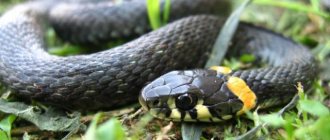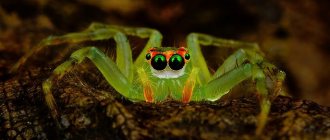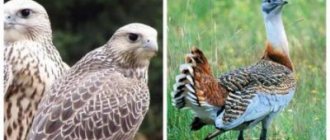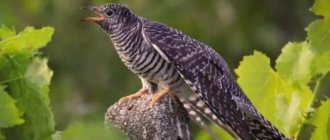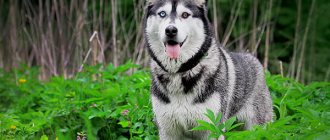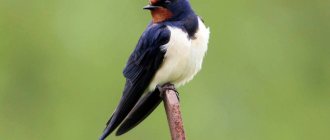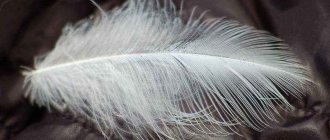gray heron
The bird is large, reaching a length of 95 centimeters. The mass of the animal is 1.5-2 kilograms. The bird is protected because the population is declining. In Russia, red-listed herons die not so much from the hands of hunters as from the cold.
Many individuals risk remaining in the country for the winter. Gray herons survive years with little snow easily. Birds usually cannot “win” snowy winters with large snowdrifts.
It is difficult to understand which heron birds are migratory The same individual can stay in Russia one year and leave it the next. The birds go to Africa, to the Sahara desert region.
Gray herons are shy. Seeing danger, the birds take off from their place. At the same time, herons often abandon their chicks to the mercy of fate. The wren, for example, pretends to be wounded and, at its own peril and risk, carries predators along with it, protecting its offspring.
general description
Each species has certain adaptive mechanisms that help them survive in difficult conditions. For example, most wading birds have long legs and specific beaks that allow them to obtain food (for example, bittern and snipe have thin long beaks). Some species, such as ducks, are waterfowl, which also helps them survive. Next, let's get acquainted with some birds in more detail.
Short-eared owl
This is a predator that goes out hunting at night, preferring to catch small-sized rodents, such as mice, for food. More recently, such birds were often found near human habitation, but now their numbers have noticeably decreased. This is due to the draining of the swamps - wise predators with unusual appearance simply have nowhere to live.
It is extremely important to maintain the number of these nocturnal inhabitants, as they help in the destruction of rodents, which is why in a number of countries the bird is listed in the Red Book and is protected.
Snipe
Let's continue our acquaintance with wading birds, which include the snipe. You can meet it in Asia and Europe, where it inhabits quite vast territories. It is not found in the north, but the western regions are included in the range. It is nocturnal and very secretive, for which it received the name “night sandpiper.” The external features of the bird are as follows:
- Body size up to 25 cm, weight – about 100 g.
- The length of the key is up to 7 cm, that is, approximately ¼ of the body size.
- The color is variegated, but modest and inconspicuous, which allows the snipe to cleverly camouflage itself. Males and females are practically indistinguishable from each other.
- Long legs help them move comfortably through swampy areas in search of food.
It rarely screams, most often out of fear, and makes quiet sounds that sound like “chwack” during takeoff. It is not able to swim because its legs do not have webs.
Wintering is carried out in Africa or South Asia, and the birds inhabiting western Europe are most often sedentary.
Classification of swamps
Swamps are classified according to several criteria:
- Climate type: temperate, tropical, subtropical, subarctic.
- The type of predominant vegetation is herbaceous, moss, shrub, forest.
- Type of macrorelief – floodplain, slope, watershed, valley.
- Type of microrelief – flat, convex, lumpy.
The Amazon River floodplain is the largest swamp on Earth.
The basic classification is based on the type of main relief, the ecological group of plants and the conditions of water and mineral balance:
- Raised bogs. The only source of nutrition is precipitation. They lack minerals, so the water has a high level of acidity. The vegetation is represented by shrubs.
- Transitional. Moderate groundwater supply, sparse vegetation.
- Lowland. The main source of nutrition is groundwater, saturated with minerals and other useful substances. Such swamps are located on lake shores and in floodplain parts of rivers.
marsh duck
Another representative of birds who chose the unkind conditions of the swamp. This is a waterfowl that is often found in the northern hemisphere, its beak is flattened, and its wide membranes help it move comfortably through the water. They often run along the surface of a reservoir, making loud noise. Researchers believe this is how birds clean their feathers.
We looked at what wading birds are and what their characteristics are. Most often these are small birds, painted with variegated colors, which allows them to camouflage themselves in the grass and hide in the reeds.
Bittern
This is a champion in camouflage among wading birds; its photo is presented below. It is a representative of the Tsaplev family; nature itself took care of the safety of this bird, endowing it with a unique coloring, thanks to which the bittern becomes almost invisible among the reeds. Very often you can find it in swampy ponds among willow or alder bushes. Such birds are found almost throughout Europe and Southeast Asia; they are migratory: in early autumn they fly south to return to their nesting grounds in March.
Leads a nocturnal lifestyle, during the day it stands motionless on one leg, resembling a heron, its relative. Interestingly, for even better camouflage, the bird sways to the rhythm of the plants.
Reptile inhabitants of swamps
Turtles, snakes and vipers are the most common reptile inhabitants of swamps. Here, optimal conditions were formed for them: high humidity, lush vegetation and suitable food.
European marsh turtle
A freshwater turtle with a huge distribution range in Eurasia and northwestern Africa. It is distinguished by an oval shell of medium size - length up to 35 cm, weight about 1.5 kg. Color can vary from brown, brown, olive to almost black. There are many yellow spots on the body.
European marsh turtle
Adapts to different natural conditions. Prefers bodies of water (except fast rivers), forests, steppes and forest-steppes. The bog turtle is considered a semi-aquatic animal. It is most active during the day and lies at the bottom of the reservoir at night. This is where turtles spend the winter. Diet type: omnivore.
Vipers
Vipers represent a genus of venomous snakes, including 26 species. They are widely distributed throughout Asia, North Africa and Europe. As a rule, snakes are small in size. They grow no more than 65 cm in length and weigh about 180 g. Vipers have vertical pupils, flat wide heads and supraorbital shields.
Common viper
Common vipers are considered one of the most common. They love not only moisture, but also coolness. It is not easy to recognize a snake by its skin color, since the color is too variable. Vipers feed on rodents, lizards, amphibians, and insects.
Already ordinary
Representatives of non-venomous snakes are often found in Eurasia (at temperate latitudes). The common grass snake is easily recognized by its bright yellow spots on its head. Females are usually larger - they can grow up to 2 m. The main food is amphibians and rodents.
Already ordinary
By nature, snakes are non-aggressive. They try in every possible way to avoid conflict with other animals and people. They spend the winter in burrows.
Ecological problems of swamps
Swamps are disappearing for both natural and anthropogenic reasons. A natural factor is the melting of glaciers. During this process, the earth's crust is leveled, and the previously wetland is overgrown with forest.
Human influence on the ecosystem of swamps manifests itself in the form of their artificial drainage. This is done for more convenient extraction of peat, deforestation, and gaining access to new territories that can be plowed. However, draining swamps leads to the disappearance of local flora and fauna, an increase in carbon dioxide and a decrease in fresh water.
Interesting fact : The Great African Lakes and Baikal are located in the zone of a major tectonic fault. Therefore, they are constantly expanding, exist for millions of years and are not threatened by waterlogging.
Sandpiper
The names of wading birds are varied, and some of them allow you to immediately guess where exactly the bird prefers to live. For example, a marsh sandpiper. This is a small bird the size of a pigeon, distinguished by long legs, yellowish-brown color, and males are lighter.
They prefer to live in swamps in pairs or small colonies, they are migratory, and with the onset of frost they migrate to warm countries in order to return to their native swamps in April. They can change their place of residence only for a serious reason:
- Drying of the swamp.
- “Takeover” of territory by people or livestock.
In general, the birds are unpretentious when it comes to housing; the male helps his girlfriend make a nest from thin twigs and twigs; most often it is placed on a hummock or a dry area of the swamp. There are up to 4 eggs in a clutch, the male is directly involved in incubating them. Birds, both adults and babies, feed on various insects.

